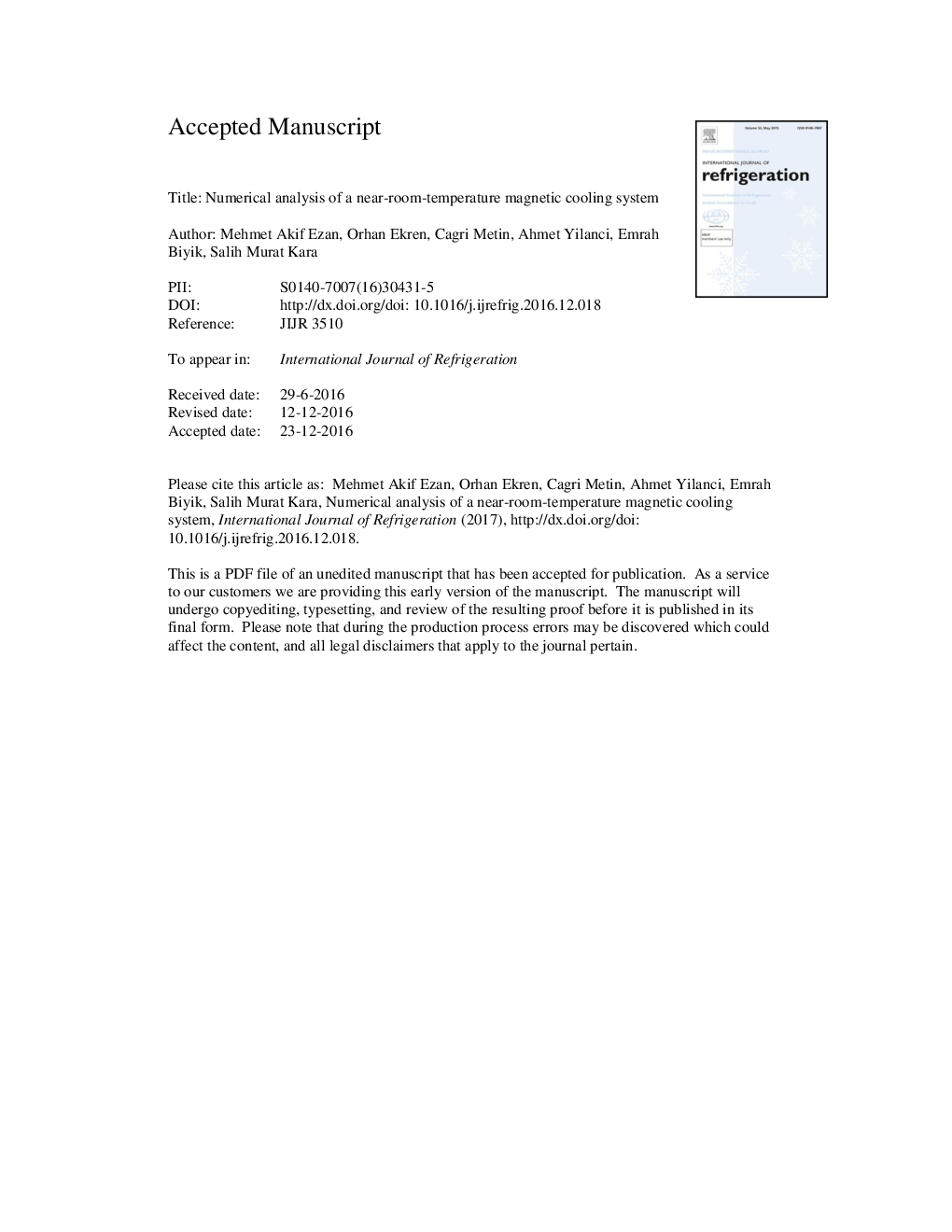| Article ID | Journal | Published Year | Pages | File Type |
|---|---|---|---|---|
| 5017163 | International Journal of Refrigeration | 2017 | 45 Pages |
Abstract
In this study, for a near-room-temperature magnetic cooling system, a decoupled multi-physics numerical approach (Magnetism, Fluid Flow, and Heat Transfer) is developed using a commercial CFD solver, ANSYS-FLUENT, as a design tool. User defined functions are incorporated into the software in order to take into account the magnetocaloric effect. Magnetic flux density is assumed to be linear during the magnetization and demagnetization processes. Furthermore, the minimum and maximum magnetic flux densities (Bmin and Bmax) are defined as 0.27 and 0.98, respectively. Two different sets of analyses are conducted by assuming an insulated cold heat exchanger (CHEX) and by defining an artificial cooling load in the CHEX. As a validation case, experimental work from the literature is reproduced numerically, and the results show that the current methodology is fairly accurate. Moreover, parametric analyses are conducted to investigate the effect of the velocity of heat transfer fluid (HTF) and types of HTF on the performance of the magnetic cooling system. Also, the performance metrics of the magnetic cooling system are investigated with regards to the temperature span of the magnetic cooling unit, and the cooling load. It is concluded that reducing the cycle duration ensures reaching lower temperature values. Similarly, reducing the velocity of the HTF allows reducing the outlet temperature of the HTF. In the current system, the highest temperature spans are obtained numerically as around 6âK, 5.2âK and 4.1âK for the cycle durations of 4.2âs, 6.2âs and 8.2âs, respectively.
Related Topics
Physical Sciences and Engineering
Engineering
Mechanical Engineering
Authors
Mehmet Akif Ezan, Orhan Ekren, Cagri Metin, Ahmet Yilanci, Emrah Biyik, Salih Murat Kara,
